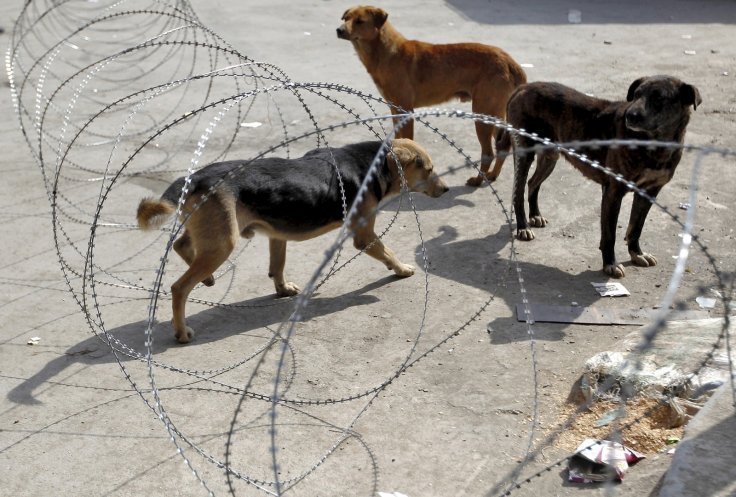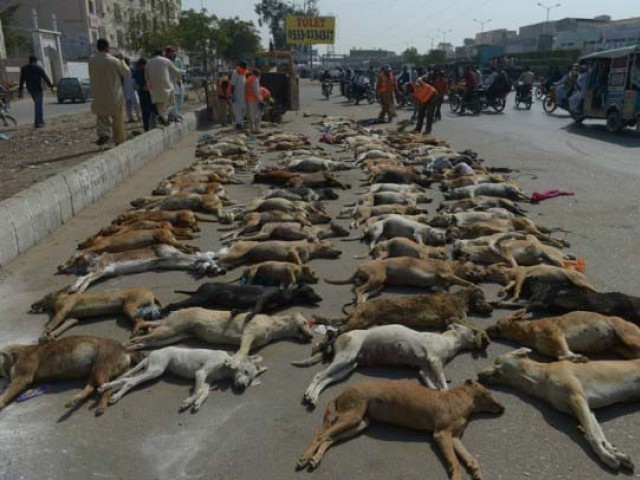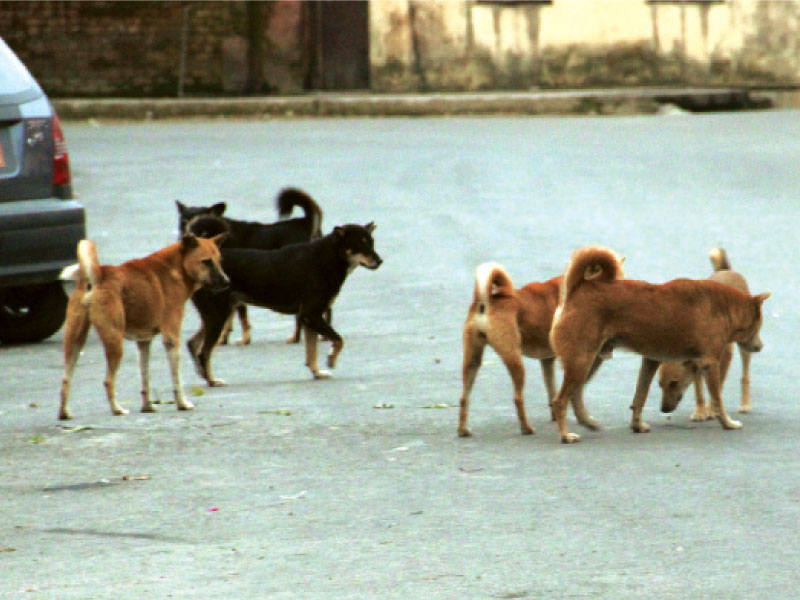In the last few years, the notion of animal rights has gained more traction in Pakistan and people have become more and more vocal about defending their rights. Social media has also given many people the platform to raise awareness about this and gain more and more sympathisers for this cause.
Gruesome pictures have also surfaced of street dogs brutally murdered during culling sprees by government organisations, which have also served to add more fuel to the fire. However, a large section of the population still remains apathetic to the misery of suffering animals. Add to that, the number of stray dogs on the street continues to grow and with that, the number of incidents of canine bites. According to data released by the Sindh Health Department, 150,000 dog-bite cases were registered across the province between 1st January and 30th September, 2020. Karachi alone saw the highest numbers, with 17,800 cases.
Talking about the concerns people share with the increasing cases of dog bites and their safety, founder of the animal rescue organisation ACF Ayesha Chundrigar said, all the concerns which people raise are valid but to the solution isn’t poisoning or shooting them but rather coming up with enforceable long term practices to put a stop to growing numbers and as well as practice better solutions.
“The anger a human has and faces when a dog bites or when someone from his family and friends has been bitten by a dog, the ferocity is understandable. Also, when innocent children are attacked the sentiments are not wrong because people need to move out freely and fearlessly from dogs and humans shouldn’t be scared to step out,” she said. “People think I am against humans but I am not. I am also a human and how can I be against my own race?”
Sharing what can be done other than killing the dogs she said that if there is any aggressive dog in any area mostly it’s like an alpha male who leads the pack of dogs and it’s very easy for organisations like theirs to recognise them and remove them from the area in their animal shelter. “That is how the other dogs also settle down because dogs are territorial species and they own their streets but as soon as the leader of the pack is rescued and moved, the others are left with no power,” she said. “The other aggressive dogs, which harm people are mothers who have their babies with them and they, for the sake of survival, attack people as they can’t differ who is their friend and who is not. Most dog mothers assume everyone coming close to them is trying to harm their puppies and that’s when they attack,” the animal rights activist explained.
People need to accept that a dog or any other animal only attacks when he or she is scared. “It is a very common sight that a dog is just lying by the street and kids pelt stones on him. People kick him because the dog is passing by and such acts scare them and then they can’t differ between the ones who hurt them and who is innocent,” she said.
Non-practical approach
With many myths and false information surrounding animals and their rights, the perception is being built by past cases and how media reports that rabies is very common in dogs but in reality, that is not the case, it is especially uncommon in urban areas. “It is a misunderstanding as rabies is mostly found in rural areas and even the dogs carrying rabies die within four to five days so contrary to the reports, the numbers of dogs carrying rabies is not very high,” she said.
Killing of animals is the solution to the problem and poisoning or shooting them will decrease the number of dog bite incidents - are profoundly incorrect practices that we have been following for decades. Not only has that not led to the eradication of existing number of dogs, those who escape these inhumane attempts chalked up as solutions, end of being more fearful and aggressive because they know their lives are at risk.
This has resulted in not-for-profit organisations having to resort to a coming up with a long-term solution to this problem that the government has been failing to resolve. “Poisoning and shooting them is a short-term solution as it is not helping to control this issue. Nurturing and vaccinating dogs is a long-term solution, which if done properly, will start producing results in seven to eight months. However, for that process to be successful, people have to be a bit patient.”
Fight for survival
Talking about how dogs react and attack, she said that like every other living being they also think of survival and when they see the world as a fight or survival of the fittest place, than they reproduce more and more to sustain their species. To start with the solution to the problem is to pick up aggressive dogs and neuter the alpha males so that the reproduction can be controlled. “The ones who are left from their pack can be good guard dogs. If we provide them with leftover food and water from our houses, they can be loyal guardians of the neighbourhood,” she added.
Clearing the misconception and how a certain mindset has been formed, she said that it’s not that organisations don’t work [to create awareness] but social media, and even sometimes mainstream media, portrays these strays as ferocious beasts and only their killing and rescuing makes headlines, which is sends the wrong message and then as a result, orgnanisations who are trying to help them are considered as people who hate humankind.
More than dogs and cats
Other than dogs, the domestically confessed animals and their way for transportation is another level of suffering. For example, donkeys are used as a means of transport and the abuse they go suffer is dreadful. Donkeys don’t even bite or exhibit aggressive behaviour but still face beating and traumatising conditions. “Carrying tons of weight on their small backs, getting beaten for walking slow and recieving zero sympathy from their owners, are all common mistreatments that majority of these animals suffer from daily. Even for them, there is no support from any authority. The most important thing, which is needed for animals is care and education in humans so they can learn to be empathetic towards animals who are harmless,” said Chundrigar.
Other than dogs and donkeys, animals which are used for feeding such as goats, cows, chicken, and even birds - the way they are transported from one place to another in small cages squeezed and tied together, is a traumatising site. Pointing out the problematic system of transportation for animals Chundrigar said that the impact of sudden breaks, the quality of those vehicles, bumpy roads and such long routes without food and water stresses these poor animals out and creates fear amongst them, which why most of them try to run away and get scared as soon as they reach their destination.
As far as the food intake of all these animals is concerned, all they eat is garbage and plastic and as humans eat them, we humans end up consuming that as well and that is one of the reasons why humans suffer from increased anxiety and hormonal issues. “Humans need to realise that animals are a vital part of our lives if not for them at least for ourselves. We should take care of them as we eat them and it’s affects our own well-being too,” she explained.
Exotic fascinations
The issues of humans are not only with dogs or any livestock but also with wild life animals, which they want to pet and keep in their houses in bizarre situations just to show off to people. Similarly, innocent animals are taken away from their natural habitat confined inside zoos like prisoners just for the sake of entertainment of humans.
“When an animal is taken away and put in a cage, they keep questioning their dreadful circumstances and most of them die due to depression,” she said. “Instead of zoos, these animals should be kept in a state similar to their natural habitat which will also allow people or children who want to see them to be able to view them running, playing and enjoying rather than witnessing a bear shaking his head in anger, a lion who can’t run and keeps hitting the walls or a monkey making noises since he feels trapped,” she said.
Speaking about the impact that caging of animals and zoos are having on children in Pakistan, she said that, “By showing this to our children, we as humans are actually exploiting animals and we are giving the same power to our children to disrespect animals as well when they grow up. It is not a big issue for the government but if they try to initiate the idea of large land and sanctuaries, animals will be able to live there freely and people are also going to be to visit them.”
The pet market misery
The other problem is the pet market, which is thriving on the sale of illegally smuggled or stolen animals. Many animals such as monkeys are being sold, which are illegal to sell without proper licensing. “In the last few months, we have confiscated many monkeys and kept them in animal shelters initially as we do not have any sanctuaries for them,” said Assistant Commissioner District South Saddar Sherina Junejo.
Talking about the illegal smuggle she said: “The situation inside the market has been brought under control over the last few months where now when we visit, we see water containers inside the cages and proper food given to animals who are being caged to sell.”
To curb such practices, the department has pasted many flyers across the Saddar area detailing instructions along with complaint numbers and so that people who witness such illegal sales can contact and report the offenders. The assistant commissioner also conducts surprise visits herself to the market to ensure that the rules are bring followed: “We keep going and keep rescuing those animals which are being kept illegally in inhumane conditions.”
Junejo answering how licensing is being exploited in the city mostly, said that many precious birds such as eagles, falcons and others need separate licensing for their sale. “When the department conducts raids and rescues these birds, we keep them for a week or so to ensure that they are not hurt or injured, and as soon as they are healthy, we release them,” she said.
What does the law say?
While animal rights acivists voices may have only risen these past few years, the laws to protect animals have existed for a long time. The Prevention of Cruelty to Animal’s act was formed in 1890 and it clearly states that any form of physical abuse (beating, overdriving, mutilation, blinding or killing in an unnecessarily cruel manner) and negligence (starvation, thirst and overcrowding) will result in penalty but according to Conservator Wildlife Government of Sindh Javed Mahar, noone takes such rules and laws seriously. The law has not been imposed in many years and its violation has only resulted in small fines of Rs 50 at best.
“Animal rights haven’t been taken seriously in the past and it is only recently that they have gained some traction with people and resulted in raising of new questions on the subject,” he said. The provincial government department however, has been working and presenting outcomes such as banning of fights between bears and dogs or circus fights amongst animals. “We have rescued bears all over from the country and shifted them to an international standard sanctuary, which was created in Islamabad. However, the problem is that we do not have sanctuaries for every animal that we rescue,” he said.
With the initiative to resolve the issue of rabies and dog bites, Indus hospital and Getz Pharma have launched a pilot project called Rabies Free Pakistan (RFP). District south has facilitated them by providing space and helping them coordinate with other relevant stakeholders for a Trap-Neuter-Vaccinate-Return (TNVR) intiative, which is an alternate and human solution to killing them. Through the inititative, the dogs are neutered and vaccinated, and after its success in South, other districts are also opting this plan and setting up surgical centres.
Between right and wrong
“There is no definite answer to what side of the animal rights is right and which is wrong but killing any living being is inhumane,” said Head of Infectious Diseases department Indus Hospital Dr Naseem Salahuddin. Adding that what can be done is reducing those aspects which are causing deadly diseases. “Even from the guidelines laid out by WHO, OIE and SEO, it is clear that rabies cannot be controlled through killing of dogs,” she said.
To cope up with these issues, in 2017 the team started with the vaccination and sterilisation of dogs. It was a pilot project to control Animal Birth Control (ABC) and Mass Dog Vaccination (MDV) but due to limited finances the process is slow. “We contacted the then mayor and he assured his full support but the finances released were very limited and after a while the support discontinued and now, we are operating on our own resources,” she shared, adding that if the project could have worked out on a larger scale, then in these four years the situation of the city would have been fully under control and they could have expanded to other cities of the province as well but due to limited finances they only have two teams working. Initially they had planned for 100 teams because the number of dogs is continuously multiplying and even if all of them are vaccinated and neutered, it will take a year for to fully see the outcome of this.
“One of the main reasons for the increase in these dogs is the amount of garbage in the city, if that can be controlled than the dogs won’t have much to eat and they can’t survive as now they get plenty of food, which is why they are strong and healthy to attack more, said Dr Salahuddin, who also serves on the WHO advisory panel for rabies. “The problem cannot be resolved through anger. We can’t down play the anger people have if anyone they know is bitten by a stray dog but then again, the government in this regard needs to take measures and nothing can be achieved by just a few private organisations taking matters into their own hands.”

